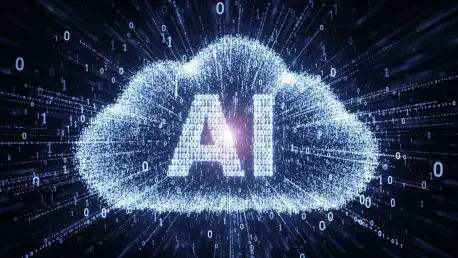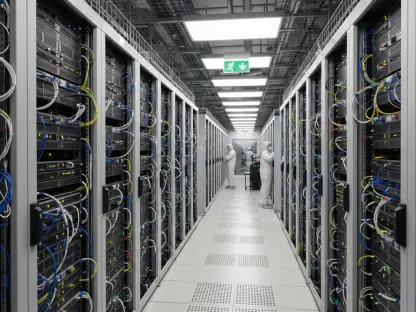Enterprises have raced to scale AI from proofs of concept into production, yet cost opacity, compliance risk, and vendor lock-in kept mounting at precisely the moment when teams needed faster build cycles, audited models, and predictable unit economics to justify expanding budgets and moving critical workloads onto cloud platforms at the edge.
Introduction
The enterprise AI cloud has been reshaped by a push for transparency and control, as CIOs weigh performance against governance and portability. Hyperscalers still dominate distribution, but decentralized platforms are carving out space by promising verifiable pricing, composable services, and data isolation that suits regulated industries. That shift has set the stage for ICP Caffeine AI, developed by the DFINITY Foundation, to reposition from a generalized blockchain into an AI cloud engine aimed at enterprise productivity.
This report examines how that pivot aligns with the market’s turn toward natural language programming, workload portability across chains and clouds, and usage-linked economics. It also considers the gaps that could slow adoption, including scalability, developer traction, and regulatory oversight that grows stricter as deployments cross borders and touch sensitive data.
Industry Overview And Competitive Context
The enterprise AI cloud now spans inference and training services, data orchestration, low-code/no-code tooling, embedded security and compliance, and on-chain/off-chain workflows that support audit trails and policy enforcement. In this landscape, Microsoft and Google Cloud bring breadth and compliance catalogs, while AI-first SaaS firms such as Palantir, C3 AI, and BigBear.ai focus on end-to-end solutions for analytics, operations, and decision support. Decentralized alternatives, led by efforts like ICP, aim to merge cloud-grade performance with verifiable economics and composability.
ICP Caffeine AI reframes the Internet Computer as an AI cloud engine designed to move ideas to production with natural language programming and a “chain-of-chains” architecture for routing data and inference across domains. The aim is to deliver enterprise-grade SLAs and transparent metering while integrating with incumbent clouds so teams can keep data where it must reside and still gain decentralized guarantees. That approach fits a climate in which securities law, privacy regimes, and AI governance shape procurement as much as raw speed.
Trends, Signals, And Forecasts
Structural forces are converging. AI workloads are meeting decentralized infrastructure as buyers seek auditability and usage-linked pricing that can be verified on-chain. Low-code/no-code is accelerating through natural language programming that compresses build cycles and broadens who can contribute. Multichain coordination is rising as chain-of-chains designs help isolate data while scaling throughput. Most importantly, enterprise AI readiness has matured: banks and other regulated sectors have shifted from pilots to production SLAs, and cost pressure has made inference optimization and transparent metering a core requirement.
Recent signals support this direction. ICP’s token reportedly rose 56%, suggesting investor enthusiasm for the AI cloud thesis. TVL was reported at $237 billion in Q3 2025, even as dApp activity declined 22.4%, highlighting a divergence between institutional capital and grassroots engagement. Partnerships with Microsoft and Google Cloud are positioned to meet enterprises where they build while adding decentralized controls. Cost benchmarks are central: ICP Caffeine AI has claimed 20–40% reductions in inference costs for financial clients, particularly in real-time analytics and risk workloads.
Forward views hinge on share capture from a trillion-dollar cloud market. Scenarios depend on adoption velocity, compliance alignment, and unit economics relative to hyperscalers and AI-first SaaS. A KPI framework emerges: compute consumption measured in Cycles, burn-to-mint ratios for token sustainability, uptime and latency SLAs for production inference, cross-chain throughput for interoperability, and ROI proof points that track conversion from pilots to live production.
Technology, Tokenomics, And Economics
Two technical vectors underpin ICP Caffeine AI’s strategy. Natural language programming lowers the barrier to app creation by letting users describe functionality and letting the platform generate, orchestrate, and manage code and services. Chain-of-chains coordination routes data and workloads across subnets and external chains, enabling isolation for sensitive data while scaling inference more economically than a single, monolithic environment.
Tokenomics link economics to usage. ICP burns tokens to purchase compute resources called Cycles, creating a path to deflation if network demand outpaces issuance for governance and node incentives. Unlike subscription-heavy SaaS models, this design ties costs to verifiable consumption, which can appeal to teams under scrutiny to justify spend. However, sustaining that balance requires durable growth in developer deployments and enterprise workloads.
Adoption, Risks, And Execution Hurdles
Execution remains the decisive factor. Scalability must hold under production inference loads while maintaining latency targets and clean data boundaries across chains. The decline in dApp activity raises questions about developer depth, even as institutional indicators look strong. An App Market designed for discovery, monetization, and build acceleration could close that gap if it proves repeatable beyond pilot-stage apps.
Competitive dynamics are acute. Hyperscalers bring entrenched distribution, compliance toolkits, and mature marketplaces. AI-first SaaS firms can wrap compliance and orchestration into turnkey solutions. ICP Caffeine AI must differentiate on cost/performance, composability, and verifiable pricing without reducing the story to price alone. Reference architectures for finance, risk, and portfolio analytics, coupled with audited performance and SLAs, would help translate claims into standardized playbooks.
Regulatory And Compliance Landscape
Regulation defines go-to-market. Securities oversight could shape tokenomics, listings, and procurement posture. The EU AI Act’s requirements for transparency and risk management, along with Singapore’s evolving AI rules and sector guidance in finance, constrain how models are trained, deployed, and audited. GDPR and residency mandates drive partitioning between on-chain and off-chain data, while SOC 2, ISO 27001, and zero-trust patterns set security baselines.
Compliance-by-design is emerging as a differentiator. Protocol-level governance hooks, KYC/AML integrations for enterprise access, policy-driven data controls, and provenance for AI outputs support audits and reassure risk teams. Regulatory engagement through sandboxes, third-party audits, and alignment with compliant cloud partners provides a path to enterprise acceptance without abandoning decentralized principles.
Conclusion
The analysis showed a coherent strategy: ICP Caffeine AI placed natural language programming, chain-of-chains orchestration, and usage-linked tokenomics at the center of an enterprise AI cloud pitch while partnering with hyperscalers to meet customers in existing environments. Market signals—price appreciation, a large reported TVL, and claimed inference savings—had supported the thesis, yet the drop in dApp activity exposed a demand gap that would have required stronger developer traction and repeatable enterprise wins.
Practical next steps centered on disciplined execution. The platform benefited most when it quantified ROI with audited benchmarks, delivered verticalized reference architectures, and locked down SLAs that matched regulated workloads. Expanding the App Market, improving discovery, and refining monetization would have nurtured developer supply while providing clean funnels from pilots to production. On compliance, tightening protocol-level controls, advancing certifications, and maintaining proactive dialogue with regulators would have reduced procurement friction and shortened deal cycles.
Looking ahead, the path to material share in the AI cloud depended on proving durable cost and performance advantages under real-world traffic, sustaining a favorable burn-to-mint ratio, and demonstrating reliable interoperability across chains and clouds. If those elements aligned, ICP Caffeine AI would have moved from promising momentum to durable adoption; if they faltered, the platform would have remained a well-capitalized entrant that signaled potential without fully converting it into market leadership.









